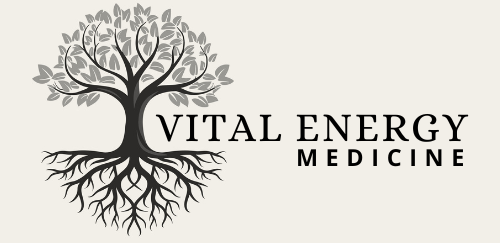🧠 Vital Energy Medicine for Parkinson’s
✨ A New Approach to Healing — Restore the Foundation to Reclaim Health
Rooted in energy. Grounded in results.
If you or someone you love is living with Parkinson’s or a chronic illness, you may feel like you’ve tried everything — and nothing has truly worked. But there is another path.
Vital Energy Medicine helps rebuild the body's internal energy systems — the deeper power source behind movement, balance, clarity, and vitality. By opening blocked energy pathways and recharging depleted organ systems, this work helps reduce both motor and non-motor symptoms of Parkinson’s and chronic illness.
It’s not hands-on, machine-based, or medical. It’s a natural, internal system reboot that supports deep healing from within.
Testimonial
“After just one session, my legs stopped shaking for the first time in 20 years. I felt energy run down my legs and into the ground — suddenly I was steady, calm, and connected. Three days later, the tremors returned but at a much lower level than before.”
— Client with Parkinson’s symptoms
Personal experience; results vary. Educational only—no medical claims.
🔄 What Can Improve?
Many clients experience relief from symptoms like:
🔹 Motor Symptoms
- Tremors
- Rigidity
- Slow movement (bradykinesia)
- Shuffling gait
- Postural instability
- Swallowing difficulties
- Speech challenges
- Mask-like facial expression
🔹 Non-Motor Symptoms
- Fatigue and energy loss
- Chronic pain
- Brain fog and cognitive decline
- Sleep disturbances / insomnia
- Mood swings, anxiety, or depression
- Digestive imbalance
- Urinary issues
- Sexual dysfunction
- Sensory symptoms
Even when medications or therapy plateau, this work can help the body and mind regain clarity, strength, and movement.
✨ You don’t have to keep suffering. Real healing is possible — and it starts from within.
⚡ Why Energy Matters for Healing
Every system in your body depends on energy — just like a house depends on wiring and battery power. When your internal energy system is weak or drained, your body can no longer regulate itself, repair damage, or maintain full vitality.
Over time, energy loss from chronic stress, trauma, aging, or illness shows up as symptoms, fatigue, brain fog, or physical decline. But when the wiring is restored and the battery recharged, health can return.
Vital Energy Medicine Wiring Analogy
Weak wiring ⇒ breakdown
Strong wiring ⇒ full function
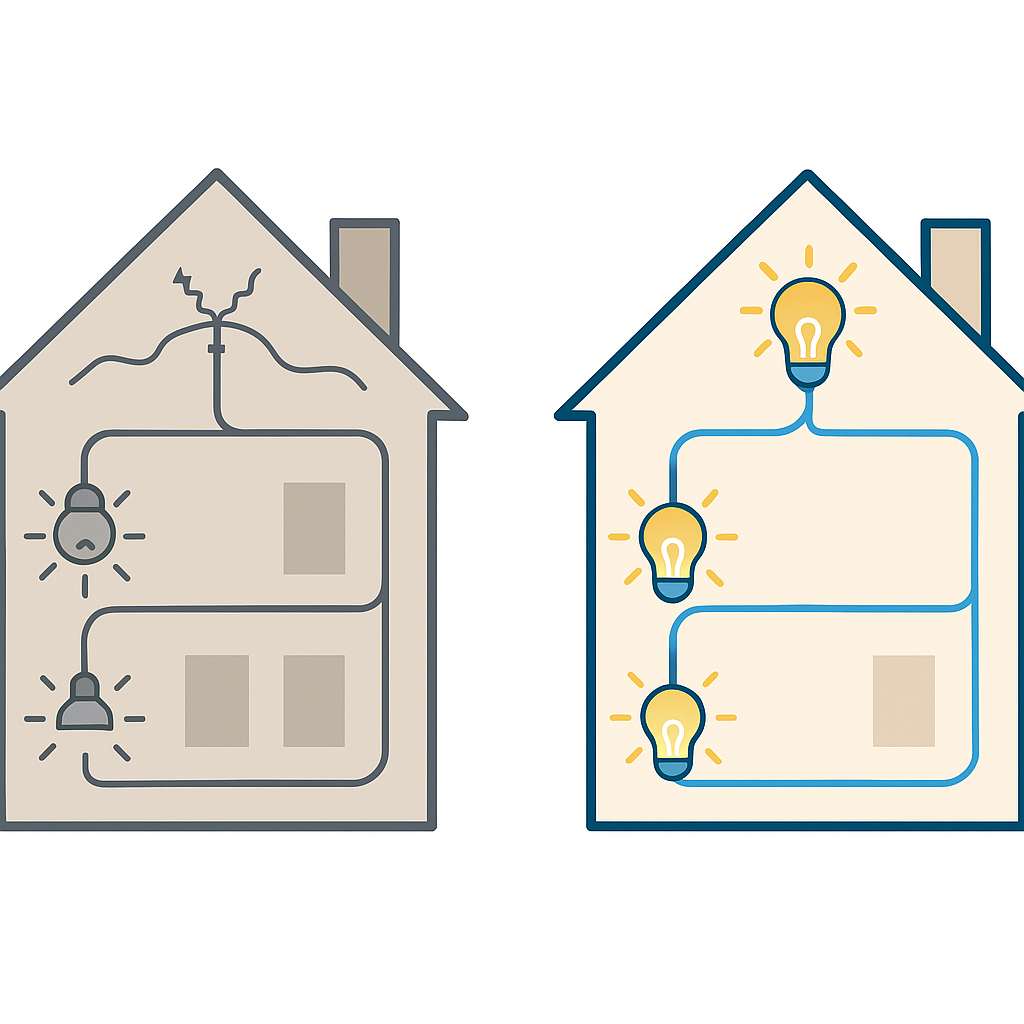
Vitality Battery: Low vs Full
Your body must recharge
or it begins to shut down.
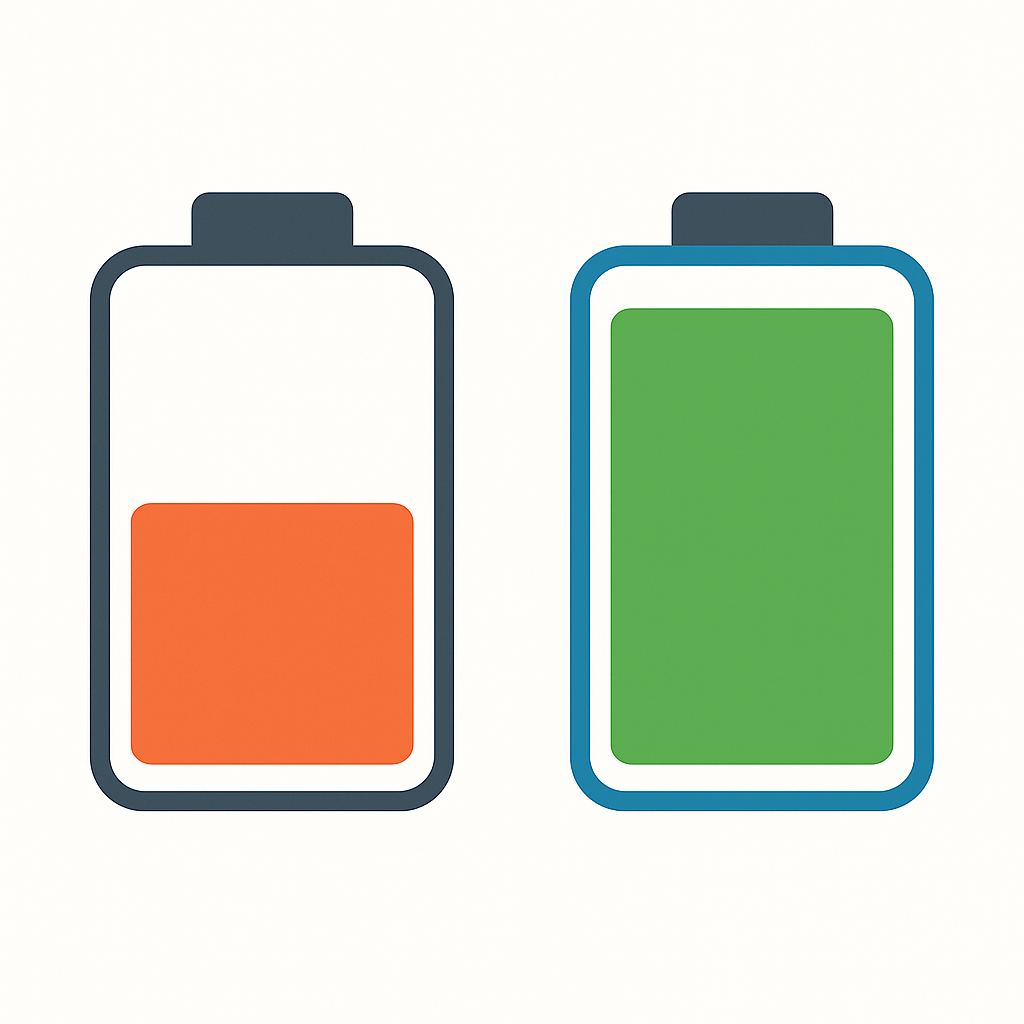
Vital Energy Medicine helps restore this power. It rebuilds the internal battery, reboots the wiring, and reactivates the body’s ability to heal, move, and thrive.
Testimonial
“In my first session, I could feel my small intestines come back to life — functioning in ways they hadn’t in years.”
— E.J. (Digestive healing)
Personal experience; results vary. Educational only—no medical claims.
🧬 Science Behind the Healing: Why Energy Matters
Educational only. Foundational physiology shows how bioelectric signaling, kidney energy metabolism, gut barrier & immune balance, and the microbiota–gut–brain axis shape resilience. Our body-up foundation focuses first on kidneys–adrenals–gut so the nervous system can organize and perform.
- Bioelectricity: Ion flows/membrane potentials coordinate growth, repair, and neural signaling.
- Kidney energy metabolism: Renal tubules have high mitochondrial demand; energy disruption reduces systemic vitality.
- Intestinal barrier & immune homeostasis: Gut lining integrity modulates inflammation and whole-body balance.
- Microbiota–Gut–Brain communication: Bidirectional signaling influences mood, cognition, and autonomic tone.
Western science perspective (concise):
- Energy & oxygen delivery: Kidneys regulate erythropoietin (EPO) → red blood cell production; low EPO links to fatigue.
- Circulation & blood pressure: Renin–angiotensin–aldosterone system helps BP/fluid balance; dysregulation strains heart & vessels.
- Detox & clarity: Reduced filtration/uremic toxins can drive exhaustion and brain fog.
- Electrolytes & membrane potential: Sodium/potassium/calcium balance underlies cellular “electrical” stability.
Together, these mechanisms help explain why stronger kidney–adrenal–gut function often correlates with steadier energy, clearer thinking, and improved movement.
📚 Research Library
⚡ Nervous System Energy Flow
Consciousness and Energy Processing in Neural Systems
(open-access).
Why this matters: frames brain function through energy processing and transformations, supporting your core idea that energy drives neural organization and performance.
Brain Energy Metabolism: A Roadmap for Future Research
(open-access).
Why this matters: shows how ATP supply, mitochondria, and substrate shuttles power signaling—your “wiring needs power” analogy in scientific terms.
🧠 Kidney–Energy Link (Western Science)
Energy Metabolism Dysregulation in Chronic Kidney Disease
(open-access review).
Why this matters: connects kidney mitochondrial/oxidative metabolism to whole-body vitality and fatigue—your foundation-first message.
Reprogramming of Energy Metabolism in Kidney Disease
(open-access review).
Why this matters: explains how kidneys shift energy pathways in stress and how restoring bioenergetics supports repair—aligns with “rebuild from within.”
🧬 Intestinal Energy, Barrier & Immune Function
Mitochondrial Function in Intestinal Epithelium Homeostasis
(open-access).
Why this matters: shows the gut lining’s energy demands—better epithelial bioenergetics = stronger barrier and steadier system.
Energy Metabolism and the Intestinal Barrier
(open-access).
Why this matters: links cellular energy status to permeability and immune activation—your “gut energy” → inflammation control.
🧠 Gut–Brain Axis & Energy Homeostasis
Microbiota & the Gut–Brain Axis in Controlling Food Intake & Energy Balance
(open-access review).
Why this matters: describes how microbial signals shape appetite, metabolism, and brain circuits—direct energy homeostasis links.
Short-Chain Fatty Acids: Signals Influencing Metabolism & CNS Pathways
(open-access review).
Why this matters: shows how SCFAs from the gut modulate inflammation, autonomic tone, and neuronal activity—your gut-to-brain energy messaging.
➕ Gut–Brain Axis — Overview (Wikipedia)
(explainer for general context; not peer-reviewed)
Educational only — links provided for independent reading; not medical claims or treatment advice.
⚠️ A Downward Spiral You Can Reverse
Reproductive, Adrenal–Kidney, and Digestive Systems Are All Connected
Parkinson’s doesn’t just affect the brain. Research shows many people experience hormonal decline, adrenal fatigue, kidney weakness, and digestive dysfunction — sometimes years before major symptoms begin.
These systems are deeply interconnected:
- Stress and aging weaken reproductive hormones
- That weakens the adrenal–kidney system, lowering internal energy
- Digestion suffers, inflammation rises, and the nervous system loses power
Vital Energy Medicine rebuilds these systems by increasing energy reserves and restoring flow in the reproductive organs, kidneys, adrenals, and gut—laying the groundwork for lasting strength, balance, and healing.
Interconnected Systems
Reproductive ↔ Kidney/Adrenal ↔ Gut/Digestion
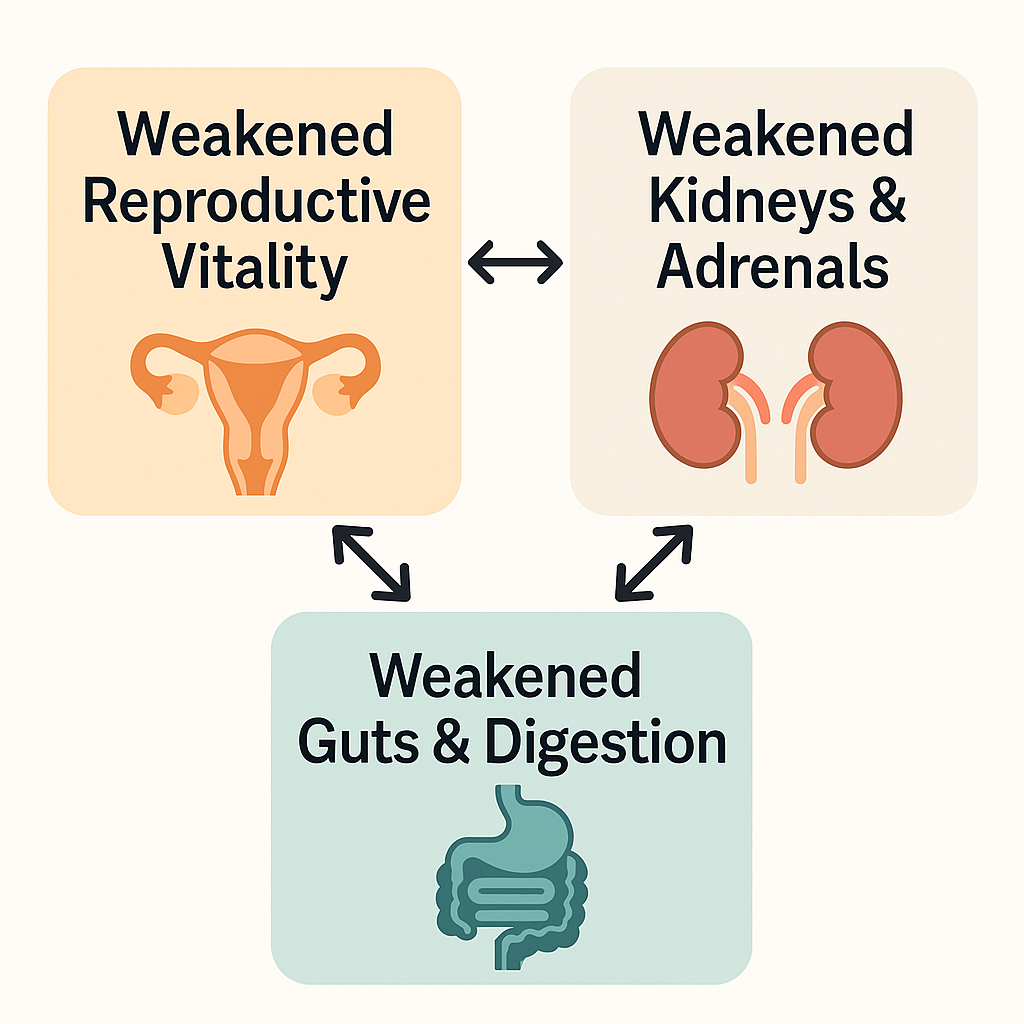
CASE STUDY · Multi-System Improvements (Vladimir)
As foundational systems recharge, improvements can echo across the body. Vladimir’s experience shows how kidneys/bladder, digestion, muscle tone, grounding, and reproductive vitality can shift together when energy flow is restored.
Testimonial
“I sleep more deeply and wake rested. My body moves fluidly, my muscles are stronger yet more supple, my feet are warmer, digestion improved — and my sexual vitality also increased. I used to wake 2–3 times a night to urinate and now it’s rare, and the old brain fog is gone.”
— Vladimir Cedeno, LMT & Licensed Acupuncturist
Kidney–Bladder
Night urination dropped from 2–3× to rare; deeper, steadier sleep.
Muscle & Grounding
Stronger yet softer muscles, warmer feet, more fluid movement.
Digestion
Better, more consistent bowel movements; improved gut comfort.
Clarity & Calm
Brain fog lifted; steadier baseline and calmer focus.
Reproductive Vitality
Renewed sexual strength; sense of overall vitality returning.
Personal experience; results vary. Educational only—no medical claims.
🧬 Science Behind the Healing
🔬 Interconnected Breakdown: Kidney–Adrenal–Gut–Hormone Axis
Before tremors or stiffness appear, many people with Parkinson’s have already lost energy in the reproductive, adrenal, and kidney systems. When these are drained, everything downstream begins to suffer.
Here’s how the cascade can unfold:
- Hormonal decline (aging, menopause, chronic stress) weakens adrenal–kidney function
- Adrenal weakness reduces stress resilience and catecholamine balance
- Kidney depletion strains brain–body communication and toxin clearance
- Digestion and immunity weaken due to reduced organ-level vitality
Vital Energy Medicine focuses on recharging these hubs concurrently—helping the body re-regulate from the inside out.
📚 Research Library
🧠 Adrenal Changes & Parkinson’s
Stoddard SL et al., 1989 – “Decreased catecholamines in parkinsonian adrenal medullae”
➡ Parkinson’s patients show adrenal medulla changes, impacting catecholamines related to stress and movement.
🔗 View on PubMed
Stoddard SL, 1994 – “The adrenal medulla in Parkinson’s disease”
➡ Explores alterations in adrenal output (epinephrine/norepinephrine) and potential links to symptom patterns.
🔗 View on PubMed
🌪️ Stress, Anxiety, Tremors & the Adrenal System
Many people with Parkinson’s notice their symptoms worsen under stress — tremors intensify, energy crashes, emotions spiral.
Here’s why:
Stress floods the body with cortisol, which disrupts the nervous system, weakens the kidneys, and depletes dopamine-related hormones. Over time, the body becomes less able to regulate movement, emotion, and healing.
Vital Energy Medicine helps reverse this by:
- Calming the HPA axis (brain–pituitary–adrenal stress loop)
- Recharging the adrenal and kidney systems
- Grounding the nervous system to reduce tremors and improve balance
Brain–Adrenal–Immune (HPA) Axis
Stress dysregulation can amplify tremors, drain energy, and weaken immune balance.
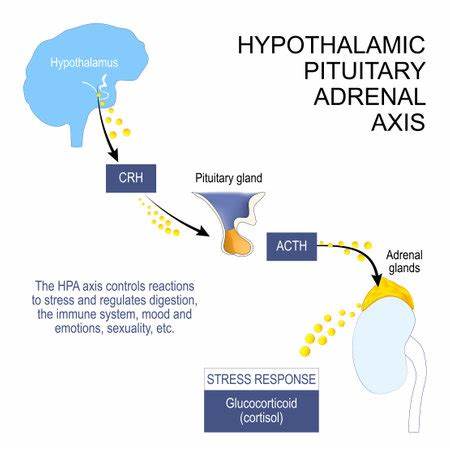
Client Story: Stress ↓ · Tremor Reactivity ↓
Highlight: 40s (00:15–00:55). Prefer the full video? Watch on YouTube →
“Within my first sessions my mind slowed, I felt calmer and more grounded, my sleep improved — and my internal tremor reactivity eased as we focused on kidneys and adrenals.”
— Julian Bar-Illan
Personal experience; results vary. Educational only—no medical claims.
- Adrenals / HPA: calmer baseline; sleep improved
- Nervous system: internal tremor reactivity eased
- Foundation (kidneys–adrenals): stronger grounding
- CNS & Brain: concentration and steadiness improved
😵💫 Could chronic stress, fear, or anxiety help trigger Parkinson’s?
Many people notice Parkinson’s symptoms flare under stress. Emerging research suggests stress may do more than intensify symptoms — it may contribute to disease onset or progression in susceptible individuals by over-activating the HPA axis, elevating cortisol, and disrupting immune balance.
- HPA overdrive → tighter muscles, tremor reactivity, sleep disruption
- Immune dysregulation → increased inflammation and neuro-irritability
- Organ strain → adrenal/kidney fatigue and gut barrier stress
Educational only; see the Research Library below for sources.
🧩 Chronic stress can help trigger autoimmunity — and that matters for Parkinson’s
- Long-term HPA-axis strain can dysregulate immunity, increasing inflammatory activity.
- Large cohort research links stress-related disorders with a higher risk of autoimmune disease.
- Autoimmune gut conditions show a modestly higher PD risk — another reason we calm stress chemistry and rebuild adrenal–kidney reserves.
Educational only; see the Research Library below for sources.
HPA + Immune Signaling

How excess stress can aggravate Parkinson’s — at a glance
Muscle & Movement
- More rigidity/stiffness after stress spikes
- Tremor reactivity increases
- Dystonia/cramps; harder starts (bradykinesia)
Pain
- Musculoskeletal pain from rigidity
- Dystonia pain (spasms, toe curling)
- Sensory/central pain flares
Sleep & Energy
- Insomnia, non-restorative sleep
- Worse next-day stiffness & fatigue
- RBD/restless legs can flare
Autonomic & Gut
- Constipation, bloating, reflux
- Orthostatic dizziness, BP swings
- Temperature dysregulation, sweating shifts
Mood & Cognition
- Anxiety/irritability; “wired-and-tired”
- Low mood/apathy; brain fog
- Stress-sensitive focus/memory
Root connection: chronic stress chemistry can strain kidney–adrenal reserves and gut integrity, increasing symptom reactivity. That’s why we restore organ vitality and grounding while we calm the HPA axis.
🧬 Science Behind the Healing
🧠 Stress, Tremors, and the HPA Axis
The HPA axis (hypothalamus → pituitary → adrenals) governs the stress response. Chronic activation skews cortisol and catecholamines, correlating with worse tremor, sleep, mood, and energy regulation in PD.
⚡ Adrenal–Kidney Reserves & Motor Output
Adrenal depletion reduces buffering against stress signals; kidney–adrenal support often maps to steadier motor output and recovery capacity.
🌐 Gut, Immunity & Neuroinflammation
Stress shifts gut permeability and microbiota composition, feeding inflammatory signaling that can aggravate neurological symptoms.
📚 Research Library
🌪️ Stress & Motor Symptoms in PD
Chronic stress and Parkinson’s motor features — HPA/catecholamine links to symptom aggravation. 🔗 Frontiers review
HPA axis dysfunction in de novo PD — altered cortisol dynamics and stress markers early in PD. 🔗 NIH/PMC
🧠 Adrenal Medulla & Catecholamines
The adrenal medulla and Parkinson’s disease — structural/functional adrenal changes relevant to movement regulation. 🔗 PubMed
🧩 Autoimmunity & Parkinson’s — selected evidence
- Stress → Autoimmune risk (large cohort): higher autoimmune risk in stress-related disorders. 🔗 JAMA cohort (2018)
- Mechanism bridge: chronic HPA load → immune dysregulation & inflammatory cascades. 🔗 Review: stress & immune dysregulation
- Autoimmune link to PD: IBD modestly ↑ PD risk; emerging autoimmune features in PD. 🔗 IBD → PD risk (meta-analysis) • Autoimmune perspective in PD
🧬 Rebuild from the Inside Out
How Energy Strengthens Brain, Immune & Gut Systems
Science is catching up to what energy medicine has shown for years. When stress, illness, or aging drain the body’s core systems, the brain, immune, and gut networks can’t coordinate healing. Rebuilding from the inside out restores the power to move, think, rest, and repair.
- Kidneys: Recharge the body’s power system to support detox, fluid balance, and oxygen delivery.
- Adrenals: Regain resilience after long-term stress—supporting steadier energy and calmer nerves.
- Digestive System: Revive stomach, intestine, increase nutrient absorption and liver energy to improve nutrient flow, immunity, and gut–brain communication.
- Central Nervous System: Activate spinal and cranial pathways that support clarity, coordination, and grounding.
Vital Energy Medicine targets these hubs directly—restoring flow where it matters most so your body can heal from within.
🧬 Science Behind the Healing
🧲 Why “Rebuild from Within” Works
Western research shows that strengthening kidney, adrenal, digestive, and nervous systems restores foundational physiology—oxygen delivery, toxin clearance, stress regulation, and gut–brain signaling—so the body can maintain energy, movement, and resilience.
- Kidneys regulate red blood cell production (erythropoietin), fluid/electrolytes, blood pressure (RAAS), and vitamin D activation—core to vitality, stamina, and bone integrity.
- Adrenals help balance cortisol and catecholamines (epinephrine, norepinephrine, dopamine precursors) that shape stress response, autonomic tone, and motor steadiness.
- Gut–Brain Axis influences inflammation, mood, and motor pathways; dysbiosis and barrier dysfunction are linked to PD progression and non‑motor symptoms.
- CNS Integration improves coordination and grounding when autonomic balance and afferent signaling (vagus/spinal) stabilize.
Vital Energy Medicine focuses on these hubs concurrently—helping the body re-regulate from the inside out.
📚 Research Library
🧠 Adrenals & Catecholamines
The adrenal medulla and Parkinson’s disease — structural/functional changes relevant to movement regulation. 🔗 PubMed
🔋 Kidney Foundations of Vitality
How Your Kidneys Work — EPO/red blood cells, RAAS/blood pressure, vitamin D activation, and toxin removal. 🔗 National Kidney Foundation
🦠 Gut–Brain Axis & Inflammation
Meta-analysis of gut microbiota in Parkinson’s — compositional differences linked to inflammation and symptoms. 🔗 PubMed
Stanford Medicine insight — gut–brain connection in long COVID, anxiety, and Parkinson’s. 🔗 Stanford Medicine
🌪️ Stress Circuit (HPA Axis)
HPA-axis dysfunction in de novo PD — altered stress response markers early in disease. 🔗 NIH/PMC
🔍 What the Research Says
A Clear, Practical Overview
Many findings line up with what people report: stress chemistry, gut–brain communication, sleep quality, inflammation, and detox systems all matter. This page is educational and does not replace medical care.
- Stress & HPA axis: Chronic stress can nudge the immune system toward inflammation and worsen motor variability.
- Gut–brain axis: Microbiome balance and gut integrity influence brain signaling, mood, and motor control.
- Sleep & autonomic tone: Better slow-wave/REM patterns often correlate with steadier next-day function.
- Inflammation & detox: Calming inflammatory load and supporting kidney/liver pathways can improve resilience.

🧩 α-Synuclein: Why organ health may matter
- Some researchers propose misfolded α-synuclein may begin outside the brain (kidneys or gut) before spreading.
- Paths discussed include vagus-nerve routes and systemic inflammatory/immune signaling.
- Vital Energy Medicine supports organ function and calms stress chemistry—aimed at reducing overall inflammatory pressure.
Educational only; evolving area of research. Read the deep dive in Block 11 →
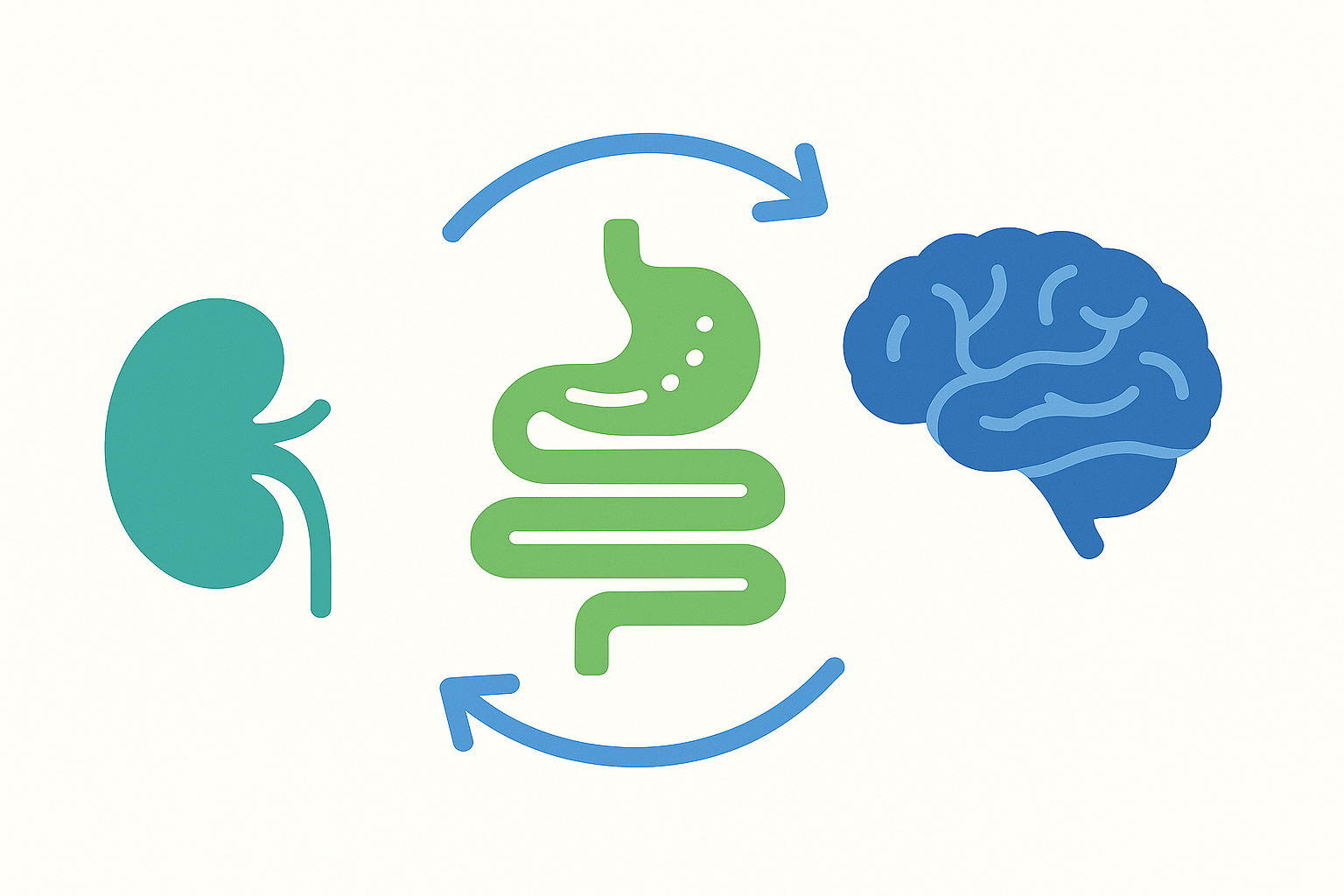
🧬 Science Behind the Healing
📚 Research Library
JAMA · PMC
• PD gut microbiome meta-analysis (npj Parkinson’s 2021):
npj Parkinson’s Disease
• Altered microbiota across early PD & RBD (Nature Communications 2023):
Nature Communications
• Diet–microbiome links in PD (npj Parkinson’s 2024):
npj Parkinson’s Disease
• Sleep disturbances in PD (review, 2022):
Open-access review
• Slow-wave sleep dysfunction linked with faster progression (2024):
Open-access study
• Renal insufficiency associated with increased PD risk (BMC Public Health 2024):
BMC Public Health
• End-stage renal disease cohort shows higher PD incidence (2014):
PubMed
• Autonomic dysfunction in PD (overview):
Open-access review
• See the α-syn deep dive in Block 11.
🌍 Real Grounding. Real Results.
Grounding isn’t just a trend — it’s a vital part of healing. But this isn’t about standing barefoot in the grass or using a plug-in mat.
With Vital Energy Medicine, we activate real internal grounding by building energy in the legs and feet. Even for people with neuropathy or instability, the process brings life back to the lower body — allowing the nervous system to stabilize, the adrenals to recharge, and energy to flow upward through the spine and organs.
Benefits include:
- Better balance, leg strength, and foot sensation
- More stability in walking, standing, and daily activity
- Lower cortisol, calmer emotions, deeper rest
- A tangible feeling of connection and inner strength
- Reduced inflammation, pain and balances blood pressure
Grounding from the Feet Up
Building energy in the legs and feet stabilizes the nervous system and recharges the adrenals.
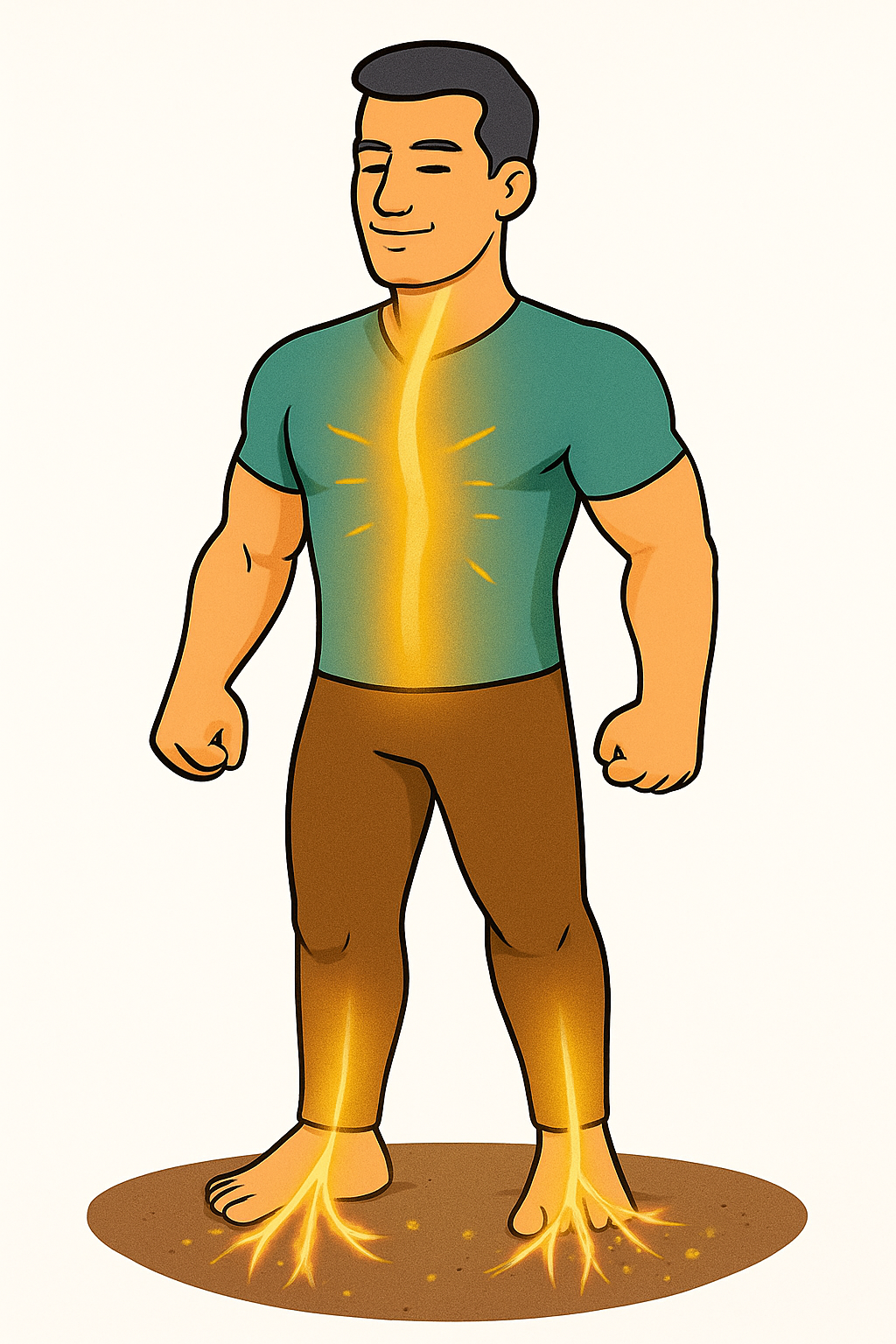
Foundation Analogy
Strong base, stable health. Weak base, strain everywhere.
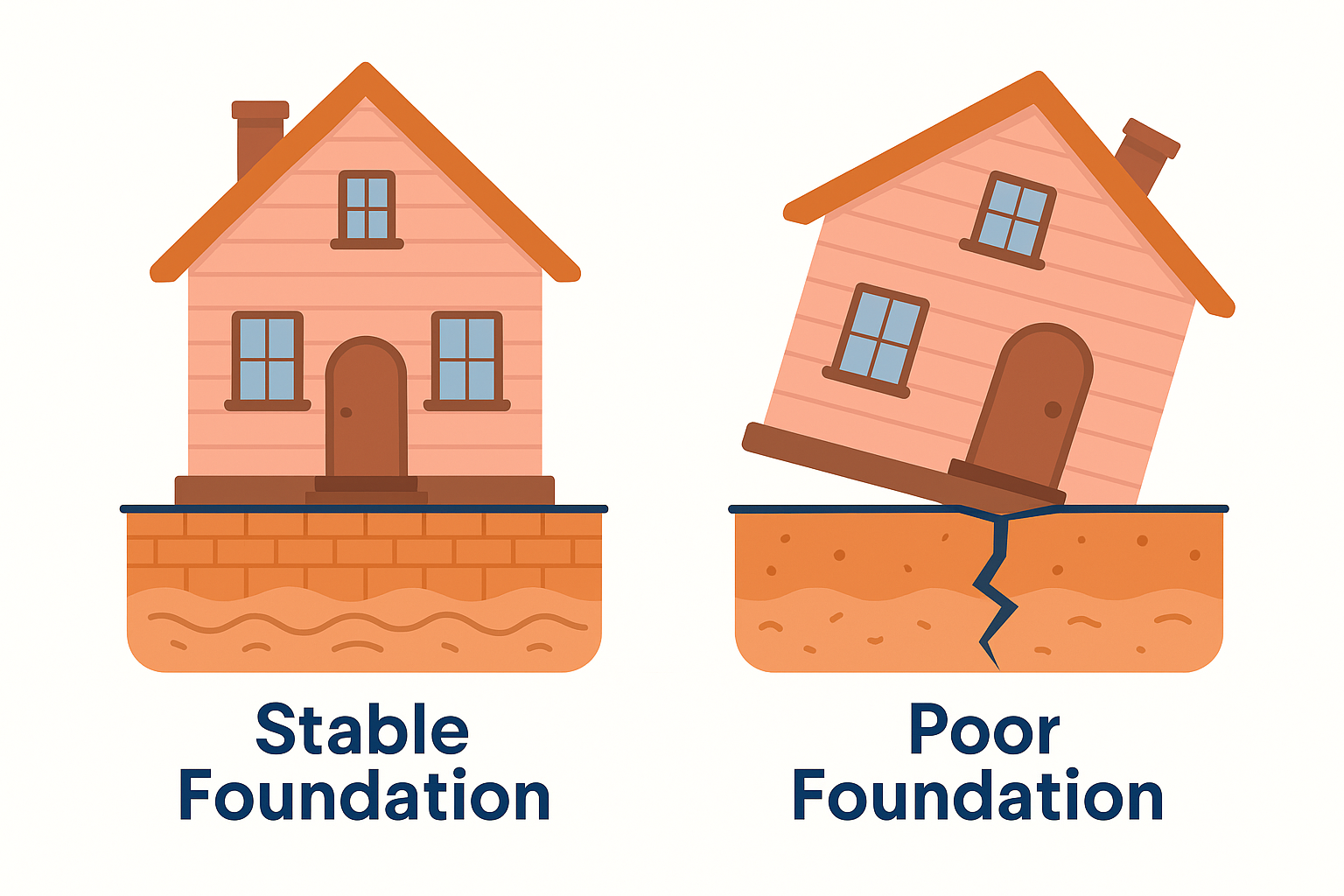
Testimonial
“The key to improving my health was getting really grounded into my feet—feeling the energy move down my legs into the Earth.”
— Kris (Belgium)
Personal experience; results vary. Educational only—no medical claims.
Grounding reconnects your body's energy with the Earth to recharge, stabilize, and strengthen your foundation for health. Restore your foundation, reclaim your vitality.
Why this matters for Parkinson’s: Strong grounding helps recharge kidney–adrenal reserves, which supports stress recovery and reduces tremor triggers. This sets the stage for the kidney-origin research you’ll see in the next section.
Kris (Belgium) on deep grounding and renewed vitality — 45s highlight
Prefer the full story? Watch the full 3:15 video →
🧬 Science Behind the Healing
🌍 Grounding the Body’s Electrical System
In energy medicine, true grounding means activating the body's bioelectrical connection with the Earth. The kidney meridian starts in the feet and plays a critical role in this.
When energy builds in the legs and opens through the feet:
- Cortisol and stress response begin to regulate
- Leg nerves and balance centers stabilize
- Internal organs receive upward-moving Earth energy
Unlike mats or devices, this grounding is generated within the body and can be felt as a shift in stability, clarity, and strength.
📚 Research Library — Grounding & Nervous System
🌍 Core Overviews
Earthing: Health Implications of Reconnecting the Human Body to the Earth's Surface Electrons
— Chevalier et al., 2012 (open-access).
Why this matters: summarizes published grounding studies on sleep, cortisol, HRV, inflammation, and blood viscosity in one place.
The effects of grounding on inflammation, the immune response, and wound healing
— Oschman, 2015 (open-access review).
Why this matters: reviews early pilots (e.g., DOMS) and inflammatory markers to outline possible mechanisms.
😴 Sleep, Cortisol & Autonomic Balance
The Biologic Effects of Grounding the Human Body During Sleep (cortisol profiles)
— Ghaly & Teplitz, 2004 (PubMed).
Why this matters: reports night-time cortisol reductions and more regular daily rhythm when sleeping grounded (abstract available).
Grounding the Body Improves Sleep Quality in Patients with Mild Alzheimer’s Disease
— Lin et al., 2022 (open-access).
Why this matters: randomized trial showing improved sleep quality with conductive grounding vs. sham.
🩸 Circulation & Blood Rheology
Earthing reduces blood viscosity and RBC clumping (zeta potential)
— Chevalier et al., 2013 (open-access).
Why this matters: shows increased red-blood-cell surface charge and lower viscosity after grounding—mechanism tied to microcirculation.
🌪️ Inflammation & Recovery (DOMS Model)
Pilot Study: Effect of Grounding on Delayed-Onset Muscle Soreness
— Brown et al., 2010 (open-access).
Why this matters: early blinded pilot linking grounding with changes in pain and post-exercise inflammatory markers.
🧭 Additional Reading (Narrative/Book)
Grounding – The universal anti-inflammatory remedy
— Sinatra, 2022 (open-access narrative review).
Why this matters: overview piece tying together inflammation and autonomic themes; treat as narrative, not primary data.
Oschman — Energy Medicine: The Scientific Basis (book)
— Publisher page.
Why this matters: broader bioelectrical framework used in your educational explanations; not peer-reviewed research.
Educational only — these links are for independent reading and do not constitute medical claims or advice. Many studies are small or preliminary.
🧠 Restoring the Nervous System
Brendan activates four key energy centers in the tailbone, sacrum, cranial base, and crown — powering the entire central nervous system.
Stage A · Gentle Activation
Subtle tingling or light sensations as dormant channels begin to wake.
Stage B · Flow Restored
A steady stream of energy traveling along the spine and cranial base.
Stage C · Deep Reboot
Regenerating life force that calms the brain and steadies movement.
This flow reboots the system — reducing tremors, improving clarity, and helping the brain and spinal cord restore their natural rhythm.
Central Nervous System Centers
Activating four key centers—tailbone, sacrum, cranial base, crown—helps restore CNS balance and flow.
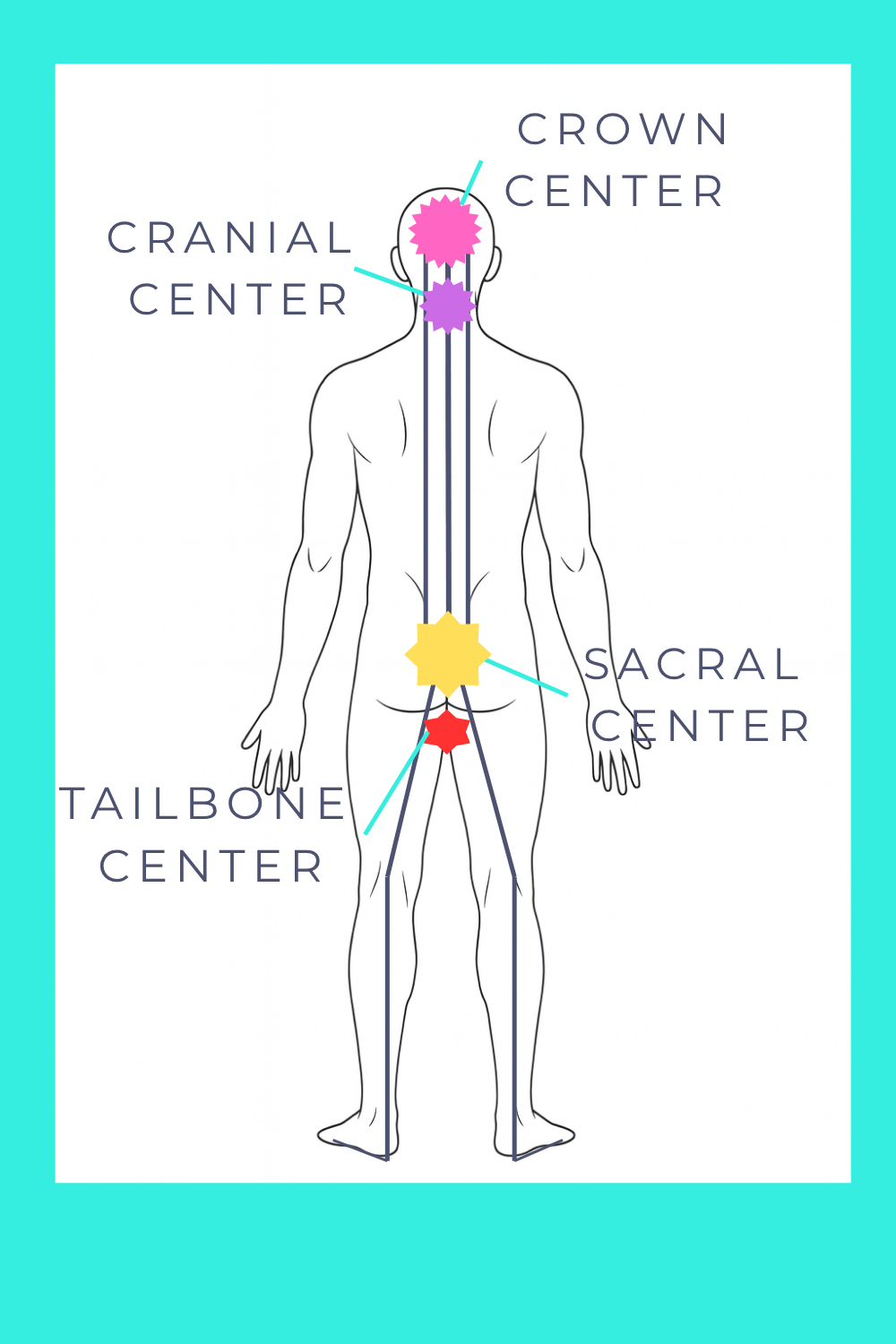
Central Nervous System
This training “upgrades the wiring and the battery charge of the brain and spine.”

Testimonial
“I felt energy flow up and down my spine—now there’s more spinal ease, less pain, and I feel grounded and balanced. Friends even said I looked taller. My heart palpitations eased, my mental clarity increased, and I also have a higher level of inner confidence.”
— Chris Northern, Licensed Acupuncturist
Personal experience; results vary. Educational only—no medical claims.
“Think of it like charging a phone with a dead battery. Brendan’s energy system does both the charging and the reboot — activating dormant channels and restoring function.”
🧬 Science Behind the Healing
🧠 Central Nervous System Activation
Educational only. Energy centers in the tailbone, sacrum, cranial base, and crown influence spinal and brain regulation. Vital Energy Medicine focuses on awakening these hubs to strengthen the central electrical current, improve brain–body communication, reduce hyper-reactivity, and support recovery.
As these centers awaken, many clients describe a steady stream of energy that calms the brain and helps the whole system reboot.
🔎 How This Maps to Known Circuits
- Tailbone (coccygeal region): Near sacrococcygeal sensory pathways and pelvic-floor reflex loops that influence posture, core stability, and sacral autonomic reflexes.
- Sacrum (S2–S4 segments): Source of parasympathetic outflow to pelvic organs; afferent signals from this region project to spinal and brainstem nuclei that help tune autonomic balance.
- Cranial base (brainstem): Vagal/glossopharyngeal nuclei, cardiorespiratory pattern generators, and baroreflex circuits—key nodes for calming “rest-and-digest” responses and state regulation.
- Crown (vertex cortex): Cortical networks (sensorimotor, attention/default-mode) coupled with thalamo-cortical rhythms that support top-down modulation of movement, perception, and autonomic responses.
This section is for education, not medical advice; individual results vary.
📚 Research Library — Restoring the Nervous System
🧠 Neuroplasticity Foundations (Parkinson’s)
Doidge N. (2015) — The Brain’s Way of Healing (book)
Why this matters: accessible overview of non-invasive ways to stimulate neuroplastic change; use as context, not primary data.
Neuroplasticity in Parkinson’s disease — mechanisms & adaptations (open-access review).
Why this matters: explains how PD brains adapt and how targeted inputs can encourage re-organization.
Exercise-Induced Neuroplasticity in Parkinson’s Disease (open-access review).
Why this matters: shows that structured practice can drive brain/spinal circuit changes supporting movement and clarity.
🔌 Non-invasive Neuromodulation (Brain/Cranial Base)
Repetitive TMS in Parkinson’s — recent evidence (open-access review/meta).
Why this matters: reports improvements in gait, mood, and cognition with rTMS protocols.
rTMS for dysarthria in PD — systematic review (2025) (open-access).
Why this matters: early but encouraging data that stimulation can support specific speech-motor circuits.
tDCS for PD — systematic review & meta-analysis (2024) (open-access).
Why this matters: mixed findings overall; supports cautious, exploratory use of gentle cranial stimulation as an adjunct.
Non-invasive vagus nerve stimulation & anti-inflammatory pathways (open-access review).
Why this matters: outlines brainstem–vagal circuits that modulate inflammation, autonomic tone, and stress responses.
🧬 Spinal & Sacral Pathways (Autonomic & Gait)
Spinal Cord Stimulation for Gait Disorders in PD — review (open-access).
Why this matters: summarizes early studies where spinal stimulation influenced gait/freezing; preliminary evidence.
New Perspectives for Spinal Cord Stimulation in PD (2024) (open-access).
Why this matters: balanced view noting current evidence is limited and not yet supportive for PD gait—keeps expectations grounded.
Sacral Neuromodulation for Neurogenic Bladder Dysfunction (open-access review).
Why this matters: shows how sacral root stimulation modulates autonomic circuits (relevant to tailbone/sacrum “centers”).
📡 Acupuncture & Bioelectrical Signaling
Electrical Properties of Acupuncture Points & Meridians — Ahn AC et al., 2008 (PubMed).
Why this matters: reviews evidence that some points show distinct electrical characteristics—an entry point to bioelectric pathways.
Electroacupuncture for motor dysfunction & constipation in PD (open-access clinical study).
Why this matters: reports symptom improvements when EA is added to conventional therapy (pilot-level evidence).
Overview of systematic reviews of acupuncture in PD (open-access).
Why this matters: concludes acupuncture is promising but overall evidence remains limited/inconclusive—good for expectation setting.
Educational only — not medical advice. Many studies are early-stage; results vary and larger trials are needed.
🧬 Your Organs Hold the Key to Recovery
When your organs and glands are strong, the whole system can heal. In youth, the body’s “battery and wiring” are usually full and responsive—recovery comes faster and serious issues are rarer. Over time and with chronic stress, that charge drops and resilience wanes. This work helps recharge the battery and stabilize the wiring so healing becomes possible again.
🔋 Battery & Wiring Analogy
Think of your organs as the body’s power cells and your nervous system as the wiring.
Youthful Charge
High organ energy and responsive wiring → faster recovery, greater resilience.
Aging & Stress
Battery drains, wiring strains → more symptoms, slower repair.
Recharging
We restore organ energy (kidneys, adrenals, gut) and stabilize the nervous system to lift the whole network.

🩸 Kidneys
Energy focus: Recharge the body’s “battery,” fluid/electrolyte balance, filtration.
Why it matters: Better stamina, clearer head, steadier internal terrain.
🔥 Adrenals
Energy focus: Reset stress chemistry, support resilience and recovery.
Why it matters: Calmer nerves, steadier movement, improved sleep/wake rhythm.
🍽️ Digestion
Energy focus: Power stomach/intestines and liver; improve absorption and gut–brain signaling.
Why it matters: Lower inflammatory pressure; more consistent energy and clarity.
🧠 CNS + 🌿 Reproductive
Energy focus: Activate spinal/cranial pathways (wiring) and rebuild foundational hormone strength (battery primer).
Why it matters: Smoother coordination, stronger recovery capacity, and whole-system vitality.
🧬 Science Behind the Healing
📚 Research Library
• Gut microbiome differences in PD (npj Parkinson’s Disease, 2021): link
• Autonomic dysfunction in PD (overview): link
• Sleep disruption and PD progression (2024): link
• Stress-related disorders and autoimmune risk (JAMA, 2018): link
💪 Strength returns
Arms and legs feel steadier and more powered as core systems recharge.
🚶 Mobility improves
Walking, standing from a chair, and daily movement get easier as grounding stabilizes the CNS.
🧊 Pain calms
Less stiffness and soreness as adrenal–kidney and gut systems reduce reactivity.
Educational only; individual results vary.
💊 Why Medication Alone Isn’t Enough
Relief matters — and so does the foundation
Medications like levodopa can boost dopamine and ease movement — and they’re often essential. Over time, though, many people notice challenges:
- “Wearing off” periods and motor fluctuations
- Dyskinesia (involuntary movements)
- Emotional/non-motor crashes between doses
- Need for dose changes; diminishing effect for some
If part of the problem lives in the kidneys, adrenals, and gut — systems that affect dopamine balance, inflammation, and stress response — then we also need a foundational approach, not only a brain-focused one.
Vital Energy Medicine helps restore these deeper systems, so you’re not just chasing symptoms — you’re rebuilding the foundation that helps the brain hold improvements.
Educational only. Always work with your neurologist to manage medications.
Organs That Support Dopamine Balance

Track 1: Work With Your Neurologist
Optimize timing, dosing, and combinations to reduce “off” time and dyskinesia. Medical care remains your front line for symptom control.
Track 2: Rebuild the Body’s Power System
Recharge kidney–adrenal reserves, improve gut–brain signaling, and stabilize the autonomic nervous system so improvements last longer and feel steadier.
🧬 Science Behind the Healing
📚 Research Library
• Managing “off” time (2024 fact sheet). parkinson.org
• Evidence review on motor fluctuations (open access). MDS review
• Non-motor fluctuations overview (2024). open access
Where Does Deep Brain Stimulation (DBS) Fit?
DBS can be life-changing for the right person. It’s a surgical therapy that helps reduce tremor, “off” time, and dyskinesia. It does not cure Parkinson’s; the goal is steadier symptom control and quality of life.
- Who it’s for: Typically people with levodopa-responsive symptoms and motor complications, evaluated by a movement-disorders team.
- Timing: Some benefit from considering DBS once motor complications begin rather than waiting many years.
- Options evolve: Newer “adaptive” DBS adjusts in real time. Non-implant focused ultrasound may help certain tremor-dominant cases.
Our work is complementary: Vital Energy Medicine strengthens kidney–adrenal reserves, calms stress chemistry, and restores gut–brain signaling—so your nervous system can hold improvements, whether or not you pursue DBS.
Educational only. Discuss DBS and all medical decisions with your neurologist.
FAQ: Is it either/or?
No. Many people combine medical care (including DBS) with energy-based rebuilding. We collaborate and support whatever plan you and your doctor choose.
Next step: Get a DBS evaluation if you’re curious, and book a free consult with us to discuss a foundational plan you can start now.
🧩 New Research
Parkinson’s: Could It Start in the Kidneys?
What the science suggests: weak kidneys show α‑synuclein buildup in the kidneys and later appearance in the brain (animal data).
Many people are told Parkinson’s is purely a brain condition. But emerging work suggests a different path: in some cases, misfolded α-synuclein may begin in the kidneys or gut and then travel along body–brain pathways (like the vagus nerve) toward the brain.
- 🧬 Origin: α-synuclein proteins tied to Parkinson’s may start in the kidneys or gut.
- 🧠 Route: These proteins may spread to the brain via body–brain pathways (e.g., vagus nerve).
- 🧪 Implication: Supporting kidney–adrenal and gut function may help protect neural health.
- Compromised/weak kidneys: α-synuclein clumps built up in the kidneys and later also appeared in the brain.
- Healthy/strong kidneys: no buildup in the kidneys and no buildup in the brain was detected.
Testimonial
“After a few sessions my sleep returned, pain dropped from about 7 to 2–3, the internal tremors settled, and my strength came back.”— Client with Parkinson’s symptoms, Seattle (age 65); March–June 2024
Educational only; not medical advice. See Research Library for sources.
Kidney/Gut Origins → Vagus Nerve → Brain

🧬 Science Behind the Healing
Evidence note (animal model): α-synuclein accumulation in weak kidneys was linked with later appearance in the brain, whereas healthy kidneys showed neither kidney nor brain buildup. Human confirmation is in progress.
From Periphery to Brain
The “body-first” model proposes that α-synuclein misfolding can begin in peripheral organs (not only the brain). Early pathology may arise in the gut (enteric nervous system) or possibly kidneys, then propagate via neural routes like the vagus nerve or through inflammatory/immune signaling to affect brain regions involved in movement and cognition.
Why Kidneys, Adrenals, and Gut Matter
- Kidneys: filtration, fluid/electrolyte balance, blood pressure, and erythropoietin support—key for oxygenation and steady brain perfusion.
- Adrenals: stress chemistry (HPA axis) shapes inflammation and motor reactivity; steadier cortisol/catecholamine tone = steadier output.
- Gut: microbiome + barrier integrity influence neuroinflammation and vagal signaling, with consistent differences reported in PD cohorts.
Vital Energy Medicine takes a “body-up” approach: restore organ vitality, calm stress chemistry, stabilize autonomic tone, and strengthen gut–brain communication—so the brain has a healthier upstream supply.
📚 Research Library
Peripheral Origins & Possible Spread
Nature Neuroscience (2025): Kidney ↔ brain propagation & renal clearance role (animal + human tissue). 🔗 PubMed record
• Overview of peripheral α-synuclein origins and body-to-brain spread.
🔗 ScienceAlert
• Kidney-to-brain route coverage (research news).
🔗 PsyPost
Gut–Brain Axis in Parkinson’s
• PD gut microbiome meta-analysis (consistent compositional shifts).
🔗 npj Parkinson’s Disease
• Microbiota differences in early PD and RBD cohorts.
🔗 Nature Communications
Kidney Function & PD Risk
• Renal insufficiency associated with higher PD risk (population-level). 🔗 BMC Public Health (2024)
Note: This is an evolving field. Mechanisms, causality, and clinical application are still being investigated. We track updates and adjust recommendations as evidence grows.
🎯 You Can Rebuild Your Health
Rooted in energy. Grounded in results.
Thousands of people are told there’s nothing more they can do. Yet many of my clients feel stronger, more grounded, and clearer within just a few sessions or a weekend workshop.
Recharge kidney–adrenal reserves and restore the “battery” that powers healing.
Calm stress reactivity, reduce tremor triggers, and improve sleep depth.
Improve digestion and signaling so the brain can hold gains more reliably.
Support movement, focus, and emotional steadiness from building foundational vitality.
✅ Ready to Take the Next Step?
Vital Energy Medicine offers structured programs to support people with Parkinson’s, chronic illness, or stress-related conditions. Educational only — not a substitute for medical care.
Your first session — gentle, non-invasive, Seattle or online
Start with a Free 15-Minute Consultation
- Map your goals & sensitivities
- Chronic illness: best start is Private Sessions or Packages (workshops + sessions)
- Educational only — no medical claims
💠 Private Healing Sessions
One-to-one work tailored to your goals and sensitivity level. Learn more
🌀 Healing Packages + Tracking
Combined workshops + sessions to build momentum and measure results. View packages
🧘 Weekly Online Classes
For people with chronic illness, classes are supplemental—use with Private Sessions and Multi-Day Workshops; not a stand-alone path. People without chronic illness are welcome to join.
🧭 Weekend Workshops
Immersive resets for deeper transformation and skill-building.
📊 Progress Tracking
We set a simple baseline (sleep, tremor reactivity, energy, mobility), track weekly changes, and adjust your plan so improvements hold and compound.
✨ Money-Back Guarantee for First-Time Clients: If you fully participate in your initial package and feel no benefit, we’ll refund your program fee. Simple and fair.
Educational only; not a substitute for medical care. Partner with your physician for diagnosis and medications.
